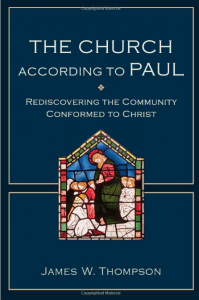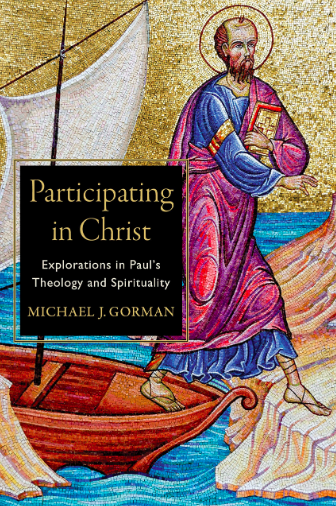 So says James Thompson in The Church according to Paul: Rediscovering the Community Conformed to Christ. That is to say, justification transcends personal standing before God and speaks to the unification of Jews and Gentiles, slaves and free, males and females, and barbarians and Scythians in the one Body of Christ, the church.
So says James Thompson in The Church according to Paul: Rediscovering the Community Conformed to Christ. That is to say, justification transcends personal standing before God and speaks to the unification of Jews and Gentiles, slaves and free, males and females, and barbarians and Scythians in the one Body of Christ, the church.
Thompson begins with a common observation that a traditional (if not the traditional) view of justification is that it is entirely individualistic. As in the hymn Amazing Grace, where “I once was lost but not I’m found” expresses such a theory of justification. Then Thompson moves to Krister Stendahl’s classic statement that such an individualism arose with Augustine and becomes dominant in NT theologians like Bultmann and Bornkamm who both organized NT theology/Pauline theology into largely individualistic categories. Some in the Reformation perspective (old perspective) will argue that there is an ecclesiology present, but those of us who have “been there” would say it remains too muted.
Thompson’s point is that justification is about communal unification in Paul’s letters. I will reformat Thompson to highlight his separable points:
- Paul employs the verb dikaioo (commonly rendered “justify”) and the noun dikaiosyne (“righteousness”) primarily in the two letters in which he is engaged in polemic about membership in the people of God.
- In Galatians he appeals to this doctrine in the defense of the full membership of gentiles in the church. In Romans he writes to explain his work as God’s minister to the gentiles (Rom. 15:16).
- The doctrine of justification, therefore, is neither the center of Paul’s theology nor the doctrine that he uses to explain God’s response to the generic human condition.
- Paul writes to specific circumstances, and his doctrine of justification is used in the context of polemic over the question of membership among the people of God (129).
Thompson’s first two points are undeniable; justification is almost entirely set in Galatians and Romans, and they are both shaped by the Jew-Gentile issue in the church. Point three is therefore an inference: justification neither is reducible to personal soteriology and thus ought not to be seen as the center of Paul’s theology since it is polemically emergent. Which is point 4.
To enter Pauline theology, and therefore the history of systemic theology, through the door of justification is to mistake a side door for the front door. It’s a door into Paul’s home but not the front door. To force everything through that door will coerce themes into a shape they were never intended to have.
Thompson then sketches both Galatians and especially Romans through the idea of justification as unification of Jews and Gentiles, and does so without colonizing one ethnic group into another and without demanding ethnicities to surrender their distinctives. Here are his conclusions, again reformatted:
- Paul faced opponents whose understanding of the church was shaped by the models they knew. Some insisted that gentiles become Jews in order to be incorporated into the people of God, while others advocated two separate churches, living in isolation from each other.
- The doctrine of justification by faith was Paul’s answer.
- The implication of this message was that existing models were inadequate. Those who accept this teaching will come together in worship and overcome cultural and sociological barriers. While others advocated homogeneous churches, Paul insisted that different ethnic groups both accept their differences and glorify God with one voice (Rom. 15:6).
- The church is not a balkanized collection of interest groups, but a community in which ethnic identities are subordinated to shared existence in Christ.














